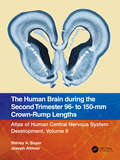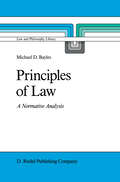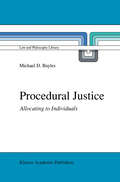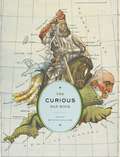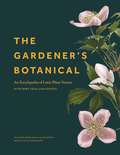- Table View
- List View
The Human Brain during the Second Trimester 160– to 170–mm Crown-Rump Lengths: Atlas of Human Central Nervous System Development, Volume 9
by Shirley A. Bayer Joseph AltmanThis ninth of 15 short atlases reimagines the classic 5-volume Atlas of Human Central Nervous System Development. This volume presents serial sections from specimens between 160 mm and 170 mm with detailed annotations. An introduction summarizes human CNS developmental highlights around 5 months of gestation. The Glossary (available separately) gives definitions for all the terms used in this voume and all the others in the Atlas. Features • Classic anatomical atlas • Detailed labeling of structures in the developing brain offers updated terminology and the identification of unique developmental features, such as germinal matrices of specific neuronal populations and migratory streams of young neurons • Appeals to neuroanatomists, developmental biologists, and clinical practitioners • A valuable reference work on brain development that will be relevant for decades
The Human Brain during the Second Trimester 160– to 170–mm Crown-Rump Lengths: Atlas of Human Central Nervous System Development, Volume 9
by Shirley A. Bayer Joseph AltmanThis ninth of 15 short atlases reimagines the classic 5-volume Atlas of Human Central Nervous System Development. This volume presents serial sections from specimens between 160 mm and 170 mm with detailed annotations. An introduction summarizes human CNS developmental highlights around 5 months of gestation. The Glossary (available separately) gives definitions for all the terms used in this voume and all the others in the Atlas. Features • Classic anatomical atlas • Detailed labeling of structures in the developing brain offers updated terminology and the identification of unique developmental features, such as germinal matrices of specific neuronal populations and migratory streams of young neurons • Appeals to neuroanatomists, developmental biologists, and clinical practitioners • A valuable reference work on brain development that will be relevant for decades
The Human Brain during the Second Trimester 190– to 210–mm Crown-Rump Lengths: Atlas of Human Central Nervous System Development, Volume 10
by Shirley A. Bayer Joseph AltmanThis tenth of 15 short atlases reimagines the classic 5-volume Atlas of Human Central Nervous System Development. This volume presents serial sections from specimens between 190 mm and 210 mm with detailed annotations. An introduction summarizes human CNS developmental highlights around 5 months of gestation. The Glossary (available separately) gives definitions for all the terms used in this volume and all the others in the Atlas. Features • Classic anatomical atlas • Detailed labeling of structures in the developing brain offers updated terminology and the identification of unique developmental features, such as germinal matrices of specific neuronal populations and migratory streams of young neurons • Appeals to neuroanatomists, developmental biologists, and clinical practitioners • A valuable reference work on brain development that will be relevant for decades
The Human Brain during the Second Trimester 190– to 210–mm Crown-Rump Lengths: Atlas of Human Central Nervous System Development, Volume 10
by Shirley A. Bayer Joseph AltmanThis tenth of 15 short atlases reimagines the classic 5-volume Atlas of Human Central Nervous System Development. This volume presents serial sections from specimens between 190 mm and 210 mm with detailed annotations. An introduction summarizes human CNS developmental highlights around 5 months of gestation. The Glossary (available separately) gives definitions for all the terms used in this volume and all the others in the Atlas. Features • Classic anatomical atlas • Detailed labeling of structures in the developing brain offers updated terminology and the identification of unique developmental features, such as germinal matrices of specific neuronal populations and migratory streams of young neurons • Appeals to neuroanatomists, developmental biologists, and clinical practitioners • A valuable reference work on brain development that will be relevant for decades
The Human Brain during the Second Trimester 96– to 150–mm Crown-Rump Lengths: Atlas of Human Central Nervous System Development, Volume 8
by Shirley A. Bayer Joseph AltmanThis eighth of 15 short atlases reimagines the classic 5-volume Atlas of Human Central Nervous System Development. This volume presents serial sections from specimens between 96 mm and 150 mm with detailed annotations. An introduction summarizes human CNS developmental highlights between 3.5 and 4.5 months of gestation. The accompanying Glossary (available free online) gives definitions for all the labels used in this volume and all the others in the Atlas. Key Features • Classic anatomical atlas • Detailed labeling of structures in the developing brain offers updated terminology and the identification of unique developmental features such as germinal matrices of specific neuronal populations and migratory streams of young neurons • Appeals to neuroanatomists, developmental biologists, and clinical practitioners • A valuable reference work on brain development that will be relevant for decades
The Human Brain during the Second Trimester 96– to 150–mm Crown-Rump Lengths: Atlas of Human Central Nervous System Development, Volume 8
by Shirley A. Bayer Joseph AltmanThis eighth of 15 short atlases reimagines the classic 5-volume Atlas of Human Central Nervous System Development. This volume presents serial sections from specimens between 96 mm and 150 mm with detailed annotations. An introduction summarizes human CNS developmental highlights between 3.5 and 4.5 months of gestation. The accompanying Glossary (available free online) gives definitions for all the labels used in this volume and all the others in the Atlas. Key Features • Classic anatomical atlas • Detailed labeling of structures in the developing brain offers updated terminology and the identification of unique developmental features such as germinal matrices of specific neuronal populations and migratory streams of young neurons • Appeals to neuroanatomists, developmental biologists, and clinical practitioners • A valuable reference work on brain development that will be relevant for decades
The Human Brain during the Third Trimester 225– to 235–mm Crown-Rump Lengths: Atlas of Central Nervous System Development, Volume 11
by Shirley A. Bayer Joseph AltmanThis eleventh of 15 short atlases reimagines the classic 5-volume Atlas of Human Central Nervous System Development. This volume presents serial sections from specimens between 225 mm and 235 mm with detailed annotations. An introduction summarizes human CNS developmental highlights around 6.5 months of gestation. The Glossary (available separately) gives definitions for all the terms used in this volume and all the others in the Atlas. Key Features • Classic anatomical atlases • Detailed labeling of structures in the developing brain offers updated terminology and the identification of unique developmental features, such as germinal matrices of specific neuronal populations and migratory streams of young neurons • Appeals to neuroanatomists, developmental biologists, and clinical practitioners • A valuable reference work on brain development that will be relevant for decades
The Human Brain during the Third Trimester 225– to 235–mm Crown-Rump Lengths: Atlas of Central Nervous System Development, Volume 11
by Shirley A. Bayer Joseph AltmanThis eleventh of 15 short atlases reimagines the classic 5-volume Atlas of Human Central Nervous System Development. This volume presents serial sections from specimens between 225 mm and 235 mm with detailed annotations. An introduction summarizes human CNS developmental highlights around 6.5 months of gestation. The Glossary (available separately) gives definitions for all the terms used in this volume and all the others in the Atlas. Key Features • Classic anatomical atlases • Detailed labeling of structures in the developing brain offers updated terminology and the identification of unique developmental features, such as germinal matrices of specific neuronal populations and migratory streams of young neurons • Appeals to neuroanatomists, developmental biologists, and clinical practitioners • A valuable reference work on brain development that will be relevant for decades
The Human Brain during the Third Trimester 260– to 270–mm Crown-Rump Lengths: Atlas of Central Nervous System Development, Volume 12
by Shirley A. Bayer Joseph AltmanThis twelfth of 15 short atlases reimagines the classic 5-volume Atlas of Human Central Nervous System Development. This volume presents serial sections from specimens between 260 mm and 270 mm with detailed annotations. An introduction summarizes human CNS developmental highlights around 6.5 months of gestation. The Glossary (available separately) gives definitions for all the terms used in this volume and all the others in the Atlas. Key Features • Classic anatomical atlases • Detailed labeling of structures in the developing brain offers updated terminology and the identification of unique developmental features, such as germinal matrices of specific neuronal populations and migratory streams of young neurons • Appeals to neuroanatomists, developmental biologists, and clinical practitioners • A valuable reference work on brain development that will be relevant for decades
The Human Brain during the Third Trimester 260– to 270–mm Crown-Rump Lengths: Atlas of Central Nervous System Development, Volume 12
by Shirley A. Bayer Joseph AltmanThis twelfth of 15 short atlases reimagines the classic 5-volume Atlas of Human Central Nervous System Development. This volume presents serial sections from specimens between 260 mm and 270 mm with detailed annotations. An introduction summarizes human CNS developmental highlights around 6.5 months of gestation. The Glossary (available separately) gives definitions for all the terms used in this volume and all the others in the Atlas. Key Features • Classic anatomical atlases • Detailed labeling of structures in the developing brain offers updated terminology and the identification of unique developmental features, such as germinal matrices of specific neuronal populations and migratory streams of young neurons • Appeals to neuroanatomists, developmental biologists, and clinical practitioners • A valuable reference work on brain development that will be relevant for decades
The Human Brain during the Third Trimester 310– to 350–mm Crown-Rump Lengths: Atlas of Central Nervous System Development, Volume 13
by Shirley A. Bayer Joseph AltmanThis thirteenth of 15 short atlases reimagines the classic 5 volume Atlas of Human Central Nervous System Development. This volume presents serial sections from specimens between 310 mm and 350 mm with detailed annotations. An introduction summarizes human CNS developmental highlights around 9 months of gestation. The Glossary (available separately) gives definitions for all the terms used in this volume and all the others in the Atlas. Key Features • Classic anatomical atlases • Detailed labeling of structures in the developing brain offers updated terminology and the identification of unique developmental features, such as germinal matrices of specific neuronal populations and migratory streams of young neurons • Appeals to neuroanatomists, developmental biologists, and clinical practitioners • A valuable reference work on brain development that will be relevant for decades
The Human Brain during the Third Trimester 310– to 350–mm Crown-Rump Lengths: Atlas of Central Nervous System Development, Volume 13
by Shirley A. Bayer Joseph AltmanThis thirteenth of 15 short atlases reimagines the classic 5 volume Atlas of Human Central Nervous System Development. This volume presents serial sections from specimens between 310 mm and 350 mm with detailed annotations. An introduction summarizes human CNS developmental highlights around 9 months of gestation. The Glossary (available separately) gives definitions for all the terms used in this volume and all the others in the Atlas. Key Features • Classic anatomical atlases • Detailed labeling of structures in the developing brain offers updated terminology and the identification of unique developmental features, such as germinal matrices of specific neuronal populations and migratory streams of young neurons • Appeals to neuroanatomists, developmental biologists, and clinical practitioners • A valuable reference work on brain development that will be relevant for decades
Hart's Legal Philosophy: An Examination (Law and Philosophy Library #17)
by M.E. BaylesDuring the last half of the twentieth century, legal philosophy (or legal theory or jurisprudence) has grown significantly. It is no longer the domain of a few isolated scholars in law and philosophy. Hundreds of scholars from diverse fields attend international meetings on the subject. In some universities, large lecture courses of five hundred students or more study it. The primary aim of the Law and Philosophy Library is to present some of the best original work on legal philosophy from both the Anglo-American and European traditions. Not only does it help make some of the best work available to an international audience, but it also encourages increased aware ness of, and interaction between, the two major traditions. The primary focus is on full-length scholarly monographs, although some edited volumes of original papers are also included. The Library editors are assisted by an Editorial Advisory Board of internationally renowned scholars. Legal philosophy should not be considered a narrowly circumscribed field. Insights into law and legal institutions can come from diverse disciplines on a wide range of topics. Among the relevant disciplines or perspectives contributing to legal philosophy, besides law and philosophy, are anthropol ogy, economics, political science, and sociology. Among the topics included in legal philosophy are theories of law; the concepts of law and legal institu tions; legal reasoning and adjudication; epistemological issues of evidence and procedure; law and justice, economics, politics, or morality; legal ethics; and theories of legal fields such as criminal law, contracts, and property.
Principles of Law: A Normative Analysis (Law and Philosophy Library #5)
by M.E. BaylesDuring the last half of the twentieth century, legal philosophy (or legal theory or jurisprudence) has grown significantly. It is no longer the do main of a few isolated scholars in law and philosophy. Hundreds of scho lars from diverse fields attend international meetings on the subject. In some universities, large lecture courses of five hundred students or more study it. The primary aim of the Law and Philosophy Library is to present some of the best original work on legal philosophy from both the Anglo American and European traditions. Not only does it help make some of the best work available to an international audience, but it also en courages increased awareness of, and interaction between, the two major traditions. The primary focus is on full-length scholarly monographs, aIthouogh some eidted volumes of original papers are also included. The Library editors are assisted by an Editorial Advisory Board of inter nationally renowned scholars.
Procedural Justice: Allocating to Individuals (Law and Philosophy Library #10)
by M.E. BaylesDuring the last half of the twentieth century, legal philosophy (or legal theory or jurisprudence) has grown significantly. It is no longer the domain of a few isolated scholars in law and philosophy. Hundreds of scholars from diverse fields attend international meetings on the subject. In some universities, large lecture courses of five hundred students or more study it. The primary aim of the Law and Philosophy Library is to present some of the best original work on legal philosophy from both the Anglo-American and European traditions. Not only does it help make some of the best work available to an international audience, but it also encourages increased awareness of, and interaction between, the two major traditions. The primary focus is on fu- length scholary monographs, although some edited volumes of original papers are also included. The Library editors are assisted by an Editorial Advisory Board of internationally renowned scholars. Legal philosophy should not be considered a narrowly circumscribed field. Insights into law and legal institutions can come from diverse disciplines on a wide range of topics. Among the relevant disciplines or perspectives contribut ing to legal philosophy, besides law and philosophy, are anthropology, economics, political science, and sociology. Among the topics included in legal philosophy are theories of law; the concepts of law and legal institutions; legal reasoning and adjudication; epistemological issues of evidence and pro cedure; law and justice, economics, politics, or morality; legal ethics; and theories oflegal fields such as criminal law, contracts, and property.
Recorded Music (PDF): Performance, Culture And Technology
by Amanda BayleyResearch in the area of recorded music is becoming increasingly diverse. Contributions from a variety of fields, including music performance, composition and production, cultural studies and philosophy, are drawn together here, for the contrasting perspectives they bring to a range of music genres. Discourses in jazz, ethnomusicology and popular music - whose histories and practices have evolved principally from recordings - are presented alongside those of Western classical music, where analysis of recordings is a relatively recent development. Different methodologies have evolved in each of these subdisciplines where recordings have been contextualised variously as tools, texts, or processes, reflective of social practices. This book promotes the sharing of such differences of approach. Attitudes of performers are considered alongside developments in technology, changing listening practices, and social contexts, to explore the ways in which recordings influence the study of music performance and the nature of musical experience.
The Chronicles of Narnia; Prince Caspian, Book 4
by Pauline BaynesA beautiful paperback edition of Prince Caspian, book four in the classic fantasy series, The Chronicles of Narnia. This edition is complete with cover and interior art by the original illustrator, Pauline Baynes. The Pevensie siblings are back to help a prince denied his rightful throne as he gathers an army in a desperate attempt to rid his land of a false king. But in the end, it is a battle of honour between two men alone that will decide the fate of an entire world. A battle is about to begin in Prince Caspian, the fourth book in C. S. Lewis’s classic fantasy series, which has been enchanting readers of all ages for over sixty years. This is a stand-alone novel, but if you would like to see more of Prince Caspian’s adventures, read The Voyage of the Dawn Treader, the fifth book in The Chronicles of Narnia.
The Chronicles of Narnia; Prince Caspian, Book 4 (PDF)
by Pauline BaynesA beautiful paperback edition of Prince Caspian, book four in the classic fantasy series, The Chronicles of Narnia. This edition is complete with cover and interior art by the original illustrator, Pauline Baynes. The Pevensie siblings are back to help a prince denied his rightful throne as he gathers an army in a desperate attempt to rid his land of a false king. But in the end, it is a battle of honour between two men alone that will decide the fate of an entire world. A battle is about to begin in Prince Caspian, the fourth book in C. S. Lewis’s classic fantasy series, which has been enchanting readers of all ages for over sixty years. This is a stand-alone novel, but if you would like to see more of Prince Caspian’s adventures, read The Voyage of the Dawn Treader, the fifth book in The Chronicles of
The Chronicles of Narnia; The Last Battle, Book 7
by Pauline BaynesThe last days of Narnia, and all hope seems lost as lies and treachery interweave to threaten the destruction of everything. As the battle lines are drawn, old friends are summoned back to Narnia, though none can predict the outcome in this magnificent ending to the famous series. This was the seventh and final book written in The Chronicles of Narnia. It is the final book
The Chronicles of Narnia; The Last Battle, Book 7 (PDF)
by Pauline BaynesThe last days of Narnia, and all hope seems lost as lies and treachery interweave to threaten the destruction of everything. As the battle lines are drawn, old friends are summoned back to Narnia, though none can predict the outcome in this magnificent ending to the famous series. This was the seventh and final book written in The Chronicles of Narnia. It is the final book
The Chronicles of Narnia; The Silver Chair Book 6
by Pauline BaynesA beautiful paperback edition of The Silver Chair, book six in the classic fantasy series, The Chronicles of Narnia. This edition is complete with cover and interior art by the original illustrator, Pauline Baynes. Through dangers untold and caverns deep and dark, a noble band of friends is sent to rescue a prince held captive. But their mission to Underland brings them face-to-face with an evil more beautiful and more deadly than they ever expected. Enter a land where enchantment rules in The Silver Chair, the sixth book in C. S. Lewis’s classic fantasy series. For over sixty years it has been drawing readers of all ages into a magical land with unforgettable characters. This is a complete stand-alone read, but if you want to discover what happens in the final days of Narnia, read The Last Battle, the seventh and concluding book in The Chronicles of Narnia.
The Chronicles of Narnia; The Silver Chair, Book 6 (PDF)
by Pauline BaynesA beautiful paperback edition of The Silver Chair, book six in the classic fantasy series, The Chronicles of Narnia. This edition is complete with cover and interior art by the original illustrator, Pauline Baynes. Through dangers untold and caverns deep and dark, a noble band of friends is sent to rescue a prince held captive. But their mission to Underland brings them face-to-face with an evil more beautiful and more deadly than they ever expected. Enter a land where enchantment rules in The Silver Chair, the sixth book in C. S. Lewis’s classic fantasy series. For over sixty years it has been drawing readers of all ages into a magical land with unforgettable characters. This is a complete stand-alone read, but if you want to discover what happens in the final days of Narnia, read The Last Battle, the seventh and concluding book in The Chronicles of Narnia.
The Curious Map Book
by Ashley Baynton-WilliamsSince that ancient day when the first human drew a line connecting Point A to Point B, maps have been understood as one of the most essential tools of communication. Despite differences in language, appearance, or culture, maps are universal touchstones in human civilization. Over the centuries, maps have served many varied purposes; far from mere guides for reaching a destination, they are unique artistic forms, aides in planning commercial routes, literary devices for illuminating a story. Accuracy—or inaccuracy—of maps has been the make-or-break factor in countless military battles throughout history. They have graced the walls of homes, bringing prestige and elegance to their owners. They track the mountains, oceans, and stars of our existence. Maps help us make sense of our worlds both real and imaginary—they bring order to the seeming chaos of our surroundings. With The Curious Map Book, Ashley Baynton-Williams gathers an amazing, chronologically ordered variety of cartographic gems, mainly from the vast collection of the British Library. He has unearthed a wide array of the whimsical and fantastic, from maps of board games to political ones, maps of the Holy Land to maps of the human soul. In his illuminating introduction, Baynton-Williams also identifies and expounds upon key themes of map production, peculiar styles, and the commerce and collection of unique maps. This incredible volume offers a wealth of gorgeous illustrations for anyone who is cartographically curious.
The Curious Map Book
by Ashley Baynton-WilliamsSince that ancient day when the first human drew a line connecting Point A to Point B, maps have been understood as one of the most essential tools of communication. Despite differences in language, appearance, or culture, maps are universal touchstones in human civilization. Over the centuries, maps have served many varied purposes; far from mere guides for reaching a destination, they are unique artistic forms, aides in planning commercial routes, literary devices for illuminating a story. Accuracy—or inaccuracy—of maps has been the make-or-break factor in countless military battles throughout history. They have graced the walls of homes, bringing prestige and elegance to their owners. They track the mountains, oceans, and stars of our existence. Maps help us make sense of our worlds both real and imaginary—they bring order to the seeming chaos of our surroundings. With The Curious Map Book, Ashley Baynton-Williams gathers an amazing, chronologically ordered variety of cartographic gems, mainly from the vast collection of the British Library. He has unearthed a wide array of the whimsical and fantastic, from maps of board games to political ones, maps of the Holy Land to maps of the human soul. In his illuminating introduction, Baynton-Williams also identifies and expounds upon key themes of map production, peculiar styles, and the commerce and collection of unique maps. This incredible volume offers a wealth of gorgeous illustrations for anyone who is cartographically curious.
The Gardener's Botanical: An Encyclopedia of Latin Plant Names - with More than 5,000 Entries
by Ross BaytonThe definitive guide to botanical LatinUnlock the secrets of botanical Latin with this beautifully illustrated encyclopedia. The Gardener's Botanical contains definitions of more than 5,000 plant names—from abbreviatus ("shortened") to zonatus ("with bands")—along with more than 350 color illustrations.Scientific plant names are an invaluable tool for those who understand them. Formed from Greek and, more commonly, from Latin root words, not only do they make it possible for gardeners and botanists to communicate, they also contain a wealth of hidden information. The Gardener's Botanical is the key to unlocking these secrets. This guide contains a breathtaking array of botanical names in alphabetical order. Each word is listed with a pronunciation guide, definition, example plant, and, where appropriate, etymology. Also included in this illuminating guide are special features on important plant genera, fact boxes, essays focusing on the history and importance of Latin names and botanical illustrations, and an index of common names with more than 2,000 popular plants, cross-referenced with their binomial name in Latin.


